Publications
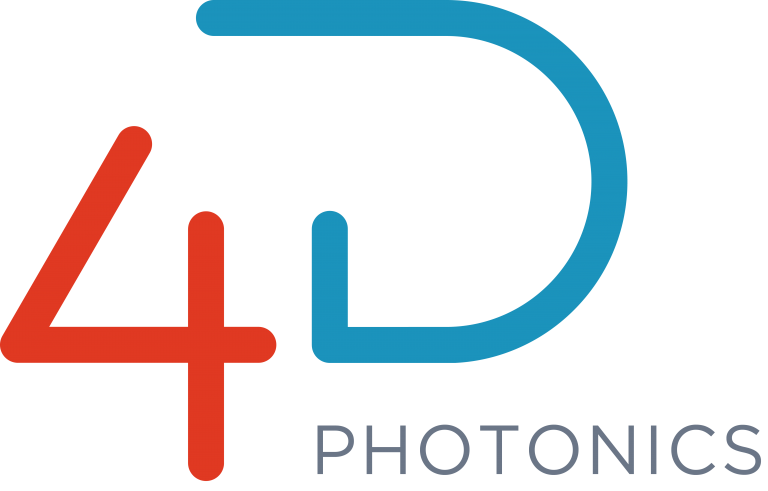
Current publications
MULTISPECTRAL EVALUATION
Analyzing multispectral emission and synchrotron data to evaluate the quality of laser welds on copper
(Jan Brüggenjürgen, Christoph Spurk, Marc Hummel, Christoph Franz, Andrè Häusler, Alexander Olowinsky, Felix Beckmann, Julian Moosmann; Analyzing multispectral emission and synchrotron data to evaluate the quality of laser welds on copper. J. Laser Appl. 1 August 2024; 36 (3): 032032.)
Description
The validation of laser welding of metallic materials is a challenging task due to the highly dynamic processes and the limited accessibility of the weld seam. Measuring the process emissions and the laser beam being processed is one way of recording highly dynamic process phenomena.
However, these recordings are always made via the surface of the weld seam, meaning that phenomena inside the seam are only implicitly recognizable and require further processing.
Partner
> Fraunhofer Institute for Laser Technology ILT
> RWTH Aachen University
> Institute of Materials Physics
MULTISPECTRAL MONITORING
Multi-spectral Monitoring Data in Correlation with X‑ray Videography during Laser Welding of Hairpins (Christoph Franz, Sören Hollatz, Oliver Burchwald, Christoph Spurk, Marc Hummel, Alexander Olowinsky, Eveline Reinheimer, Christian Hagenlocher, Felix Beckmann, Julian Moosmann; 13th CIRP Conference on Photonic Technologies [LANE 2024])
Description
In today’s production of high-performance electric engines, the hairpin technology is used to increase the efficiency. Instead
of a stator made of winded round wire, thicker copper pins are assembled and welded. Typical weld failures such as spatters,
pores or insufficient connection occur due to surface contamination, insufficient clamping, positioning or previous cutting
processes. For production facilities, it is not sufficient to identify defective welds; a classification is also required in order to
determine the causes of the fault and rectify them as soon as possible. The capability of a multi-spectral monitoring system is
evaluated in this study with the help of in-situ X‑ray videography. The data show a correlation with the stability of the vapour
capillary, the welding position and spatter formation.
Partners
> Fraunhofer Institute for Laser Technology ILT
> RWTH Aachen University
> University of Stuttgart, Institut für Strahlwerkzeuge (IFSW)
> Institute of Materials Physics
INFLUENCE ON PROCESS RADIATION
Influence of full penetration welding on the multispectral signal of the
process radiation during laser beam welding of austenitic stainless steel (Patrick Meyer, Christian Schumann,Dario Spatzek, André Häusler; 13th CIRP Conference on Photonic Technologies [LANE 2024])
Description
A 100% visual inspection of the welds carried out is not always possible for economic reasons. Different methods of process monitoring are therefore used for non-destructive testing of process and weld seam quality. In the following, the recorded multispectral signals of the reflective process radiation are evaluated using descriptive statistics and characteristics of a full penetration weld during laser beam welding of austenitic stainless steel are worked out. The aim is to detect and localize unintentional full penetration welding at an early stage and thus avoid rejects. For this purpose, adapted sample geometries with varying material thicknesses are prepared for the test series. As a result, the need to vary the welding process parameters to achieve the different welding states (full and partial penetration weld) is avoided. By evaluating the measured values of the wavelength-selective signals, a significant influence on the signal intensity and the signal frequency could be confirmed.
Partners
> Fraunhofer Institute for Laser Technology ILT
WELD DEFECT DETECTION WITH 4D.TWO
Weld Defect Detection in Laser Beam Welding Using Multispectral Emission Sensor Features and Machine Learning (Amena Darwish, Manfred Persson, Stefan Ericson, Rohollah Ghasemi, Kent Salomonsson)
Description
Laser beam welding is a highly complex process in which even the slightest deviations can lead to hard-to-detect defects such as porosity. In this article, researchers from the University of Skövde present an innovative, data-driven framework for detecting welding defects using multispectral emission sensors and machine learning. By combining supervised and unsupervised learning methods, the system successfully extracts relevant features from 4D photodiode signals and correlates them with welding defects – both for post-process analysis and real-time monitoring. The study demonstrates how AI-based evaluation of sensor signals can revolutionize quality assurance in industrial manufacturing.
MONITORING DURING LASER BEAM WELDING
Stochastic analysis of multispectral data during laser beam welding of stainless steel with different gap sizes (Patrick Meyer, André Häusler, Alexander Olowinsky; IOP Conference Series: Materials Science and Engineering, Volume 1332, 20th Nordic Laser Materials Processing Conference 26/08/2025 — 28/08/2025 Kongens Lyngby, Denmark)
Description
Quality assurance in laser beam welding demands high levels of precision and responsiveness. This paper introduces an innovative approach to process monitoring using photodiode sensors that capture reflected laser radiation. The sensor data provides valuable insights into the welding process and, when combined with machine learning, enables reliable detection of process deviations. The goal is to monitor weld quality in real time and identify potential defects at an early stage – a crucial step toward automated and intelligent manufacturing.
MODIFICATION OF MATERIAL PROPERTIES
Pilot Study for Data-driven Modification of Face Specific Material Properties (Manfred Persson)
Description
Precise monitoring of laser processes is crucial for ensuring the quality of modern manufacturing. This study presents an innovative approach for real-time evaluation of weld quality in aluminum busbar laser welding. By utilizing multispectral photodiode sensors and deep learning algorithms, relevant process data can be captured and analyzed instantly. The system detects quality deviations early and enables automated process optimization – a key step toward Industry 4.0 and intelligent manufacturing.
REAL-TIME QUALITY PREDICTION
Real-time quality prediction in busbar laser welding: A multi-spectral photodiode and ConvLSTM framework (Dan Lönn)
Description
Precise monitoring of laser processes is essential for the quality of safety-critical components, such as those used in the automotive industry. This master’s thesis presents an innovative system for real-time evaluation of weld quality in aluminum busbar laser welding. It combines multispectral photodiode sensing with a deep learning model (ConvLSTM) to analyze back-reflections and spectral signals during the welding process. Light in the range of 400 nm to 700 nm provides valuable insights into material changes and potential defects. The result is an intelligent, data-driven solution for early detection of welding flaws and optimization of industrial manufacturing processes.

Description
The validation of laser welding of metallic materials is a challenging task due to the highly dynamic processes and the limited accessibility of the weld seam.
Measuring the process emissions and the laser beam being processed is one way of recording highly dynamic process phenomena.
However, these recordings are always made via the surface of the weld seam, meaning that phenomena inside the seam are only implicitly recognizable and require further processing.
Partner
> Fraunhofer Institute for Laser Technology ILT
> RWTH Aachen University
> Institute of Materials Physics
MULTISPECTRAL MONITORING
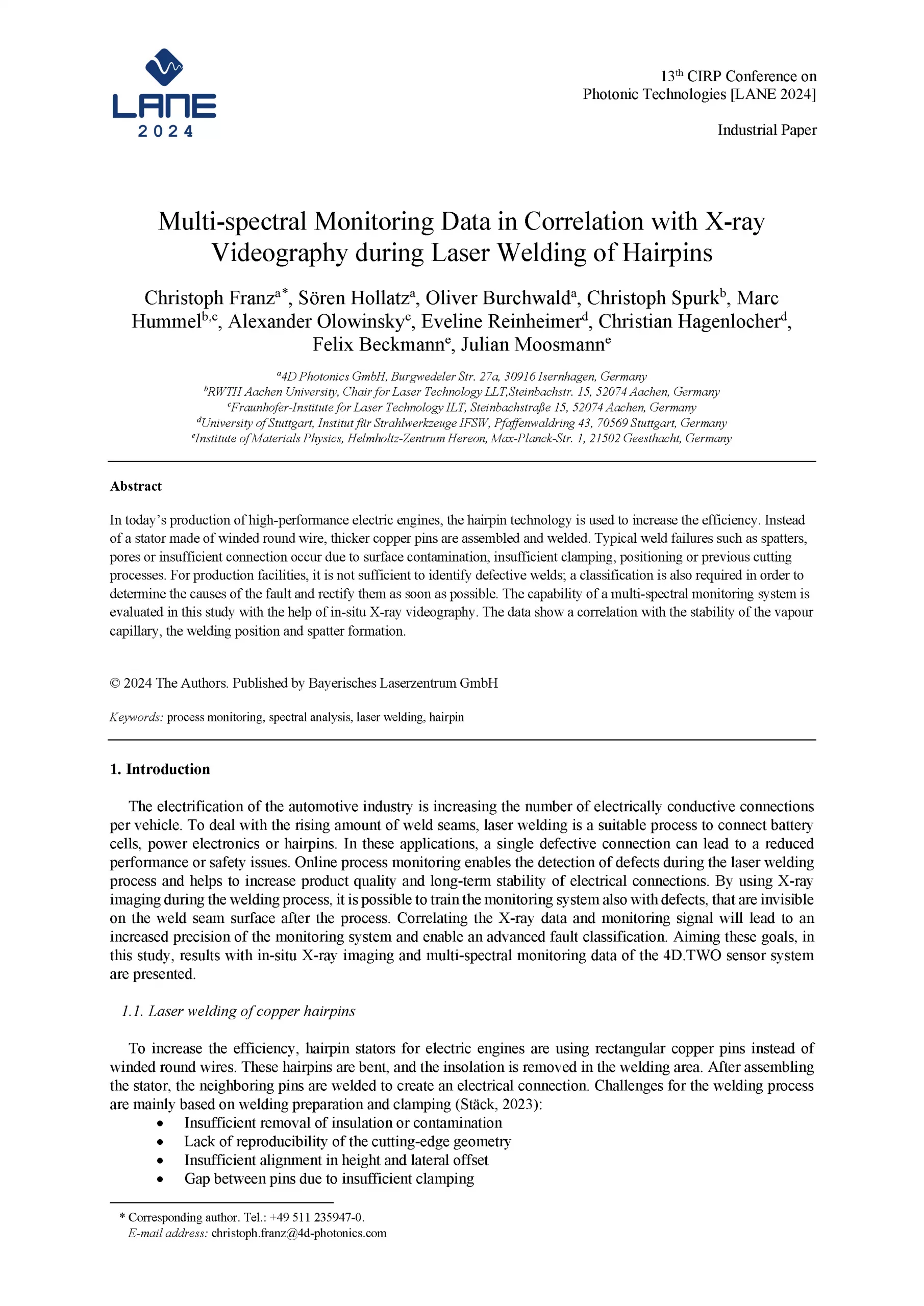
Multi-spectral Monitoring Data in Correlation with X‑ray Videography during Laser Welding of Hairpins (Christoph Franz, Sören Hollatz, Oliver Burchwald, Christoph Spurk, Marc Hummel, Alexander Olowinsky, Eveline Reinheimer, Christian Hagenlocher, Felix Beckmann, Julian Moosmann; 13th CIRP Conference on Photonic Technologies [LANE 2024])
Description
In today’s production of high-performance electric engines, the hairpin technology is used to increase the efficiency. Instead of a stator made of winded round wire, thicker copper pins are assembled and welded. Typical weld failures such as spatters, pores or insufficient connection occur due to surface contamination, insufficient clamping, positioning or previous cutting processes. For production facilities, it is not sufficient to identify defective welds; a classification is also required in order to determine the causes of the fault and rectify them as soon as possible. The capability of a multi-spectral monitoring system is evaluated in this study with the help of in-situ X‑ray videography. The data show a correlation with the stability of the vapour capillary, the welding position and spatter formation.
Partners
> Fraunhofer Institute for Laser Technology ILT
> RWTH Aachen University
> University of Stuttgart, Institut für Strahlwerkzeuge (IFSW)
> Institute of Materials Physics
INFLUENCE ON PROCESS RADIATION
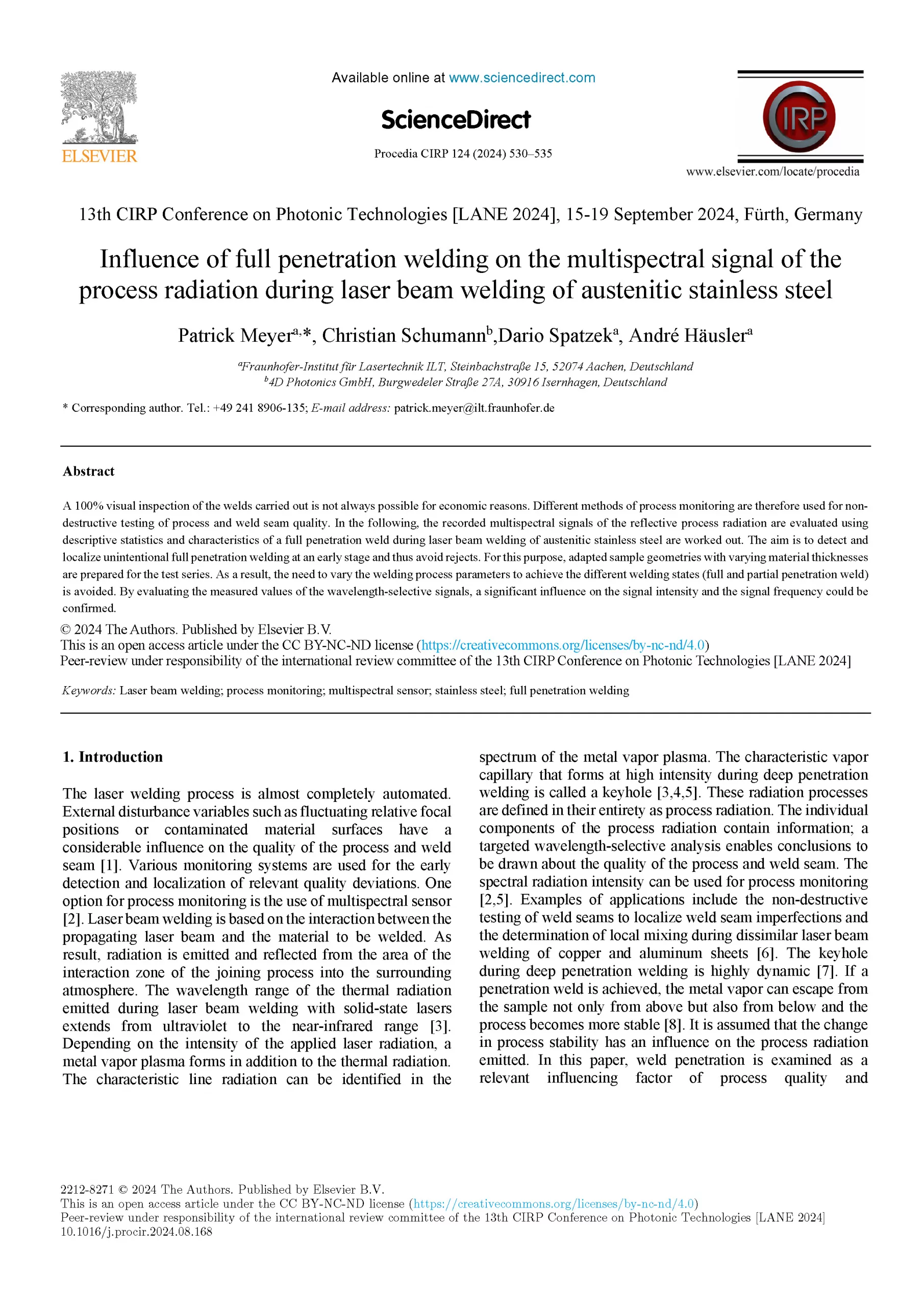
Influence of full penetration welding on the multispectral signal of the
process radiation during laser beam welding of austenitic stainless steel (Patrick Meyer, Christian Schumann,Dario Spatzek, André Häusler; 13th CIRP Conference on Photonic Technologies [LANE 2024])
Description
A 100% visual inspection of the welds carried out is not always possible for economic reasons. Different methods of process monitoring are therefore used for non-destructive testing of process and weld seam quality. In the following, the recorded multispectral signals of the reflective process radiation are evaluated using descriptive statistics and characteristics of a full penetration weld during laser beam welding of austenitic stainless steel are worked out. The aim is to detect and localize unintentional full penetration welding at an early stage and thus avoid rejects. For this purpose, adapted sample geometries with varying material thicknesses are prepared for the test series. As a result, the need to vary the welding process parameters to achieve the different welding states (full and partial penetration weld) is avoided. By evaluating the measured values of the wavelength-selective signals, a significant influence on the signal intensity and the signal frequency could be confirmed.
Partners
> Fraunhofer Institute for Laser Technology ILT
WELD DEFECT DETECTION WITH 4D.TWO
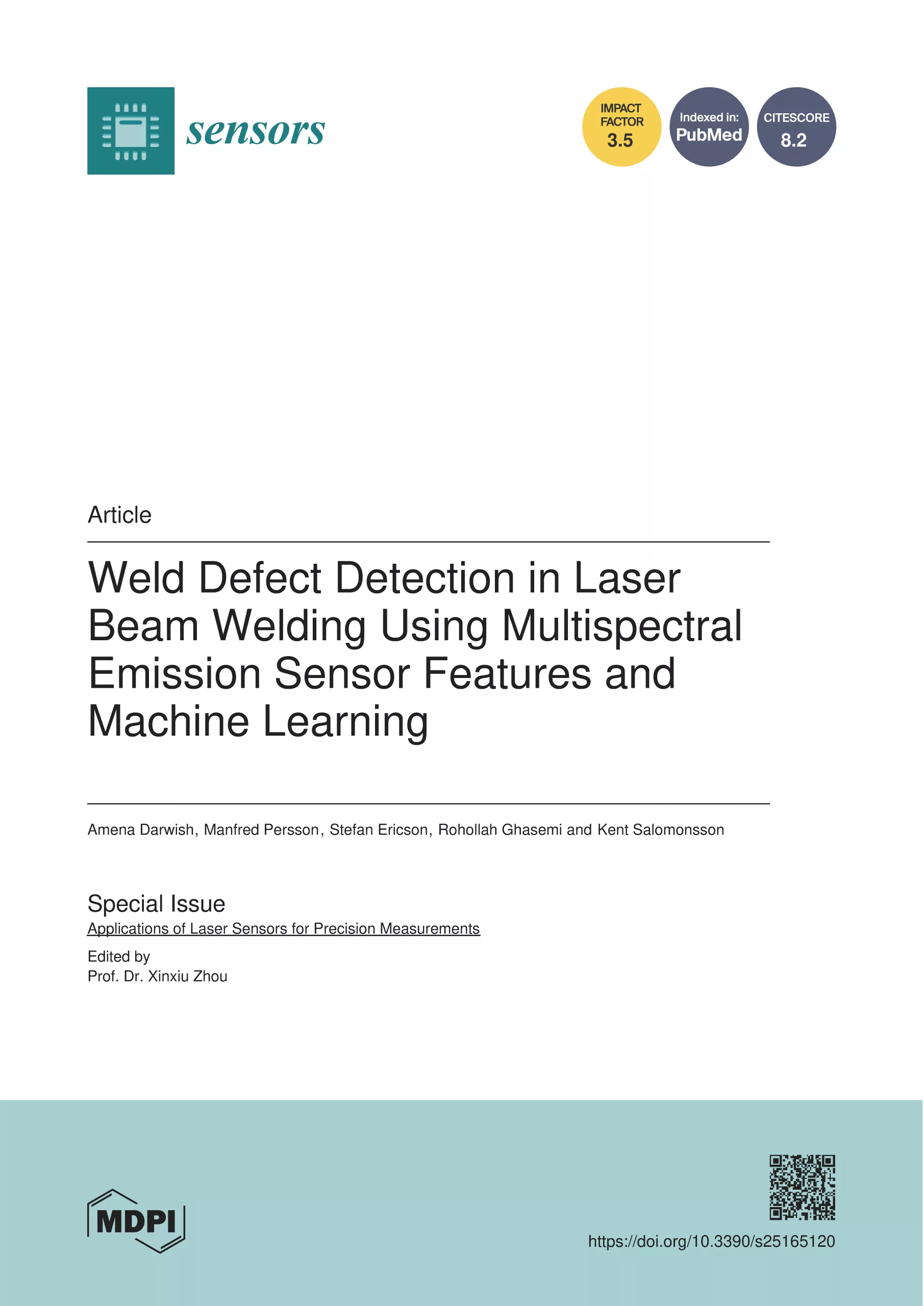
Weld Defect Detection in Laser Beam Welding Using Multispectral Emission Sensor Features and Machine Learning (Amena Darwish, Manfred Persson, Stefan Ericson, Rohollah Ghasemi, Kent Salomonsson)
Description
Laser beam welding is a highly complex process in which even the slightest deviations can lead to hard-to-detect defects such as porosity. In this article, researchers from the University of Skövde present an innovative, data-driven framework for detecting welding defects using multispectral emission sensors and machine learning. By combining supervised and unsupervised learning methods, the system successfully extracts relevant features from 4D photodiode signals and correlates them with welding defects – both for post-process analysis and real-time monitoring. The study demonstrates how AI-based evaluation of sensor signals can revolutionize quality assurance in industrial manufacturing.
MONITORING DURING LASER BEAM WELDING

Stochastic analysis of multispectral data during laser beam welding of stainless steel with different gap sizes (Patrick Meyer, André Häusler, Alexander Olowinsky; IOP Conference Series: Materials Science and Engineering, Volume 1332, 20th Nordic Laser Materials Processing Conference 26/08/2025 — 28/08/2025 Kongens Lyngby, Denmark)
Description
Quality assurance in laser beam welding demands high levels of precision and responsiveness. This paper introduces an innovative approach to process monitoring using photodiode sensors that capture reflected laser radiation. The sensor data provides valuable insights into the welding process and, when combined with machine learning, enables reliable detection of process deviations. The goal is to monitor weld quality in real time and identify potential defects at an early stage – a crucial step toward automated and intelligent manufacturing.
MODIFICATION OF MATERIAL PROPERTIES
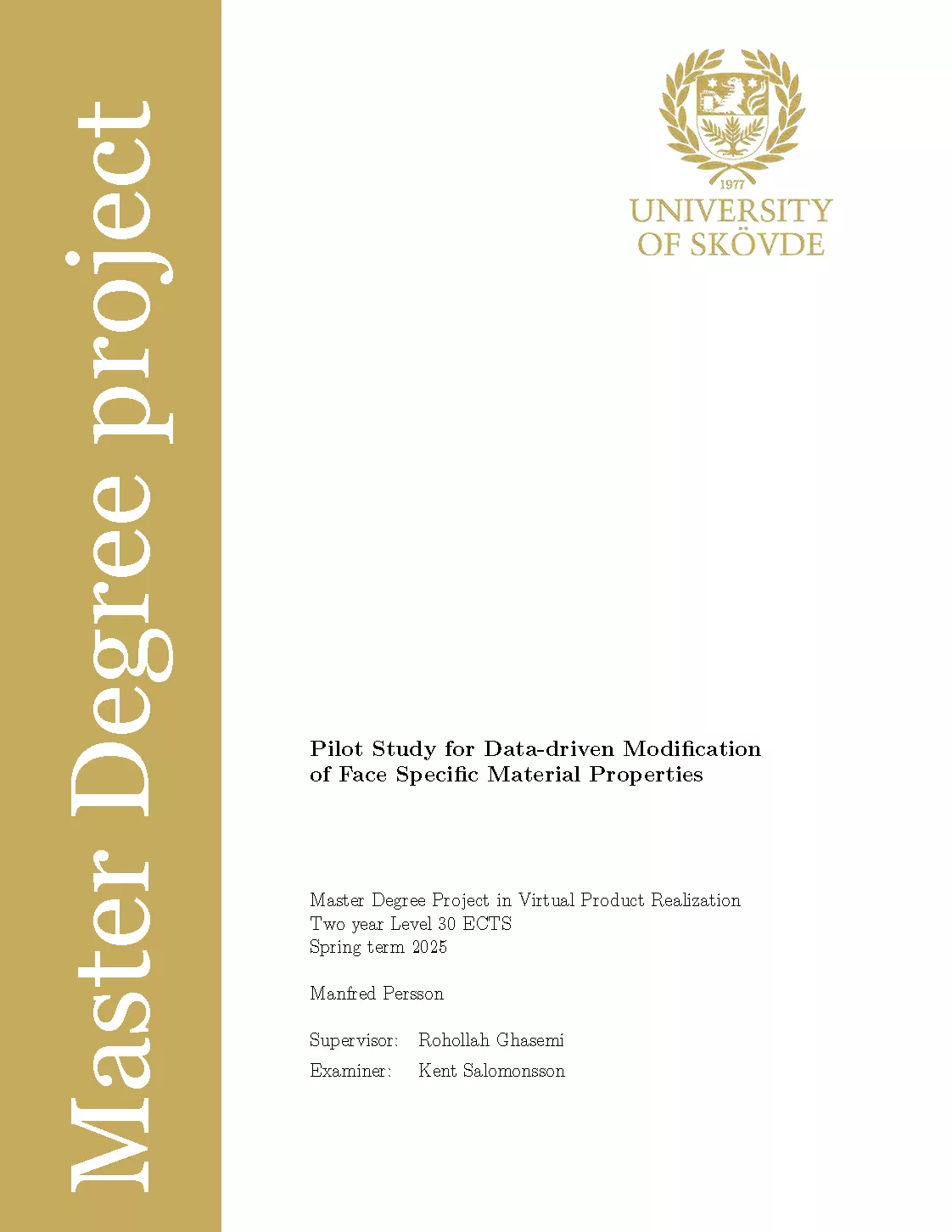
Pilot Study for Data-driven Modification of Face Specific Material Properties (Manfred Persson)
Description
Precise monitoring of laser processes is crucial for ensuring the quality of modern manufacturing. This study presents an innovative approach for real-time evaluation of weld quality in aluminum busbar laser welding. By utilizing multispectral photodiode sensors and deep learning algorithms, relevant process data can be captured and analyzed instantly. The system detects quality deviations early and enables automated process optimization – a key step toward Industry 4.0 and intelligent manufacturing.
REAL-TIME QUALITY PREDICTION
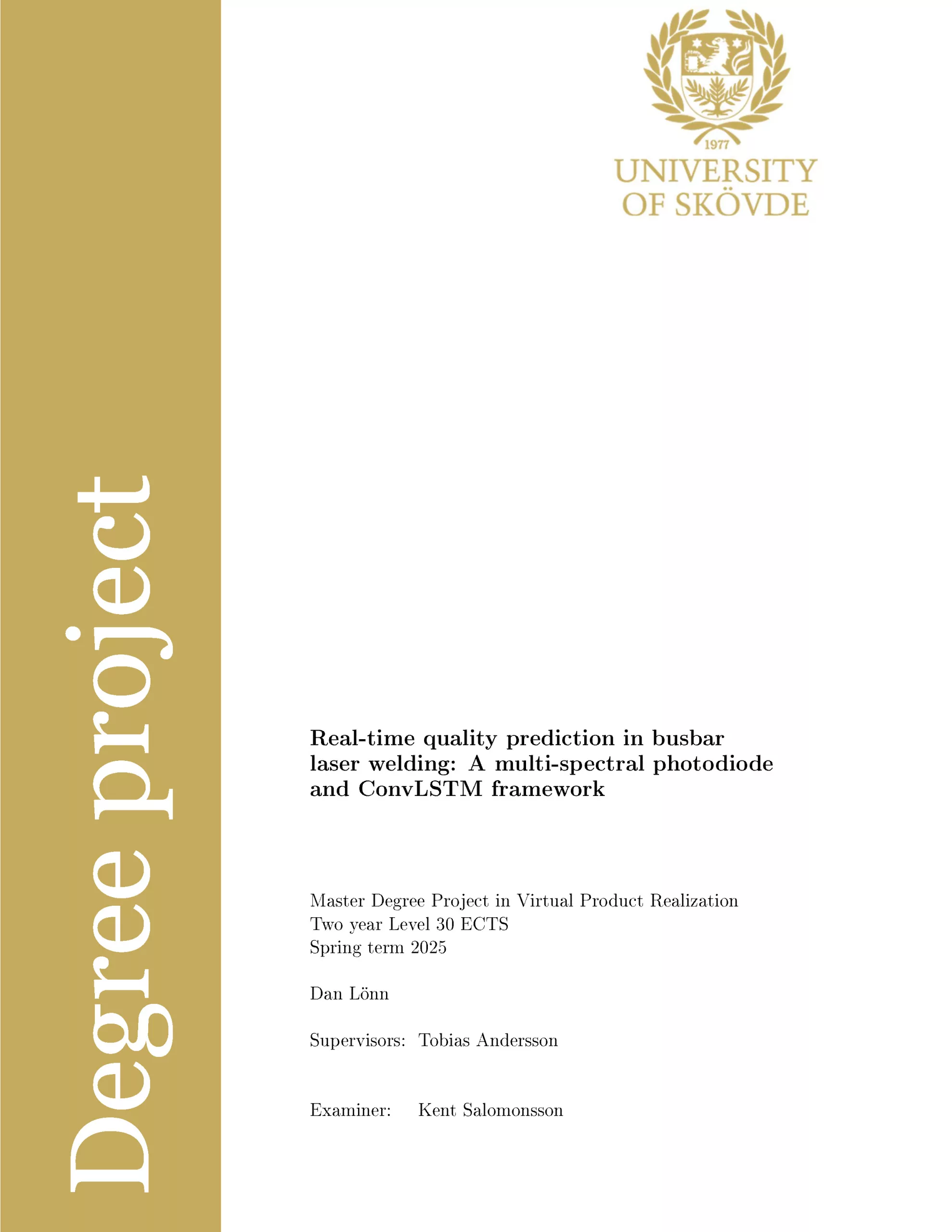
Real-time quality prediction in busbar laser welding: A multi-spectral photodiode and ConvLSTM framework (Dan Lönn)
Description
Precise monitoring of laser processes is essential for the quality of safety-critical components, such as those used in the automotive industry. This master’s thesis presents an innovative system for real-time evaluation of weld quality in aluminum busbar laser welding. It combines multispectral photodiode sensing with a deep learning model (ConvLSTM) to analyze back-reflections and spectral signals during the welding process. Light in the range of 400 nm to 700 nm provides valuable insights into material changes and potential defects. The result is an intelligent, data-driven solution for early detection of welding flaws and optimization of industrial manufacturing processes.
Contact us!
If you would like to find out more about our products and services or request a customized quote, please contact us. You can reach us by phone, e‑mail or via our contact form. We look forward to your inquiry!
Contact us!
If you would like to find out more about our products and services or request a customized quote, please contact us. You can reach us by phone, e‑mail or via our contact form. We look forward to your inquiry!
